Ever feel like choosing a mortgage lender is as confusing as decoding your favorite meme’s hidden meaning? Welcome to the ultimate, down-to-earth guide on how to compare mortgage lenders—a space where you can finally sort through the jargon, fees, and fine print without needing a PhD in finance. Whether you’re a millennial stepping into the wild world of homeownership or a Gen Z looking to make smart money moves, this guide is all about helping you navigate the labyrinth of mortgage options with wit, wisdom, and a healthy dose of real talk.
How to Compare Mortgage Lenders Table of Contents
Understanding the Mortgage Lending Landscape
Why Comparing Mortgage Lenders Is a Game-Changer
Key Factors to Consider When Comparing Mortgage Lenders
Types of Mortgage Lenders: Exploring Your Options
Your Step-by-Step Guide to Comparing Mortgage Lenders
Tech Tools and Online Platforms: Your Mortgage Comparison Sidekicks
Understanding the Fine Print: Interest Rates, APR, and Fees Demystified
Case Studies: Real-Life Experiences in Comparing Mortgage Lenders
Resources and Community Support: Your Next Steps
Final Words on Comparing Mortgage Lenders: Empower Yourself!
Understanding the Mortgage Lending Landscape
When it comes to getting a mortgage, the lender you choose will likely be a major player in your financial story. But what exactly does “comparing mortgage lenders” mean? Essentially, it’s about assessing various companies—big banks, credit unions, and online lenders—to figure out which one aligns best with your financial goals and lifestyle. Think of it like choosing a streaming service; each one offers different features, price points, and user experiences, and only one can claim the title of “perfect match.”
The modern mortgage market is booming with options. From lenders with catchy app interfaces to those with decades of established reputations, the landscape offers something for everyone. But with so many choices comes the headache of identifying the best rates, understanding hidden fees, and deciphering fine print that can sometimes read like a poorly written text message. That’s where this guide swoops in like your favorite superpowered influencer to break down everything you need to know.
Here, we’re not just comparing interest rates; we’re comparing experiences. We’ll look at factors like digital convenience, customer support, flexibility in product offerings, and even lender transparency—because if you’re about to commit to a 15- or 30-year mortgage, you deserve to know exactly who you’re dealing with.
Why Comparing Mortgage Lenders Is a Game-Changer
Let’s be honest: no one wants to be the person who ends up with an unexpectedly high closing fee while the person next door snags an ultra-low rate. Comparing mortgage lenders can literally save you thousands of dollars over the life of your loan. But it’s more than just about saving cash. Here’s why:
- Maximize Savings: A slightly lower interest rate, when compounded over decades, can add up to serious savings.
- Discover Hidden Fees: The lender with the lowest advertised rate might pack on hidden fees and additional costs that can sabotage your budgeting plans.
- Better Customer Experience: Nowadays, digital-first lenders offer slick apps and intuitive interfaces, making your mortgage journey hassle-free.
- Transparency and Trust: Comparing lenders means you get to check customer reviews, ratings, and even social media vibes—because trust is everything when it comes to making a long-term financial commitment.
- Tailored Options: From fixed-rate to adjustable-rate mortgages, some lenders offer more flexible terms that might be a better fit for your specific financial situation.
Think of comparing mortgage lenders as curating your personal finance playlist. Each option has its own vibe, and finding the right one can transform a daunting process into a smooth, empowering experience.
Key Factors to Consider When Comparing Mortgage Lenders
Diving into the mortgage market without knowing what to look for is like heading to a food festival without any idea of your favorite cuisine. To help you out, here are the key factors to keep an eye on:
Interest Rates
The interest rate is arguably the most obvious number you’ll see. But don’t be fooled: the advertised rate is only part of the story. You need to consider how the rate applies over the life of the loan, including any variable factors if you’re considering an adjustable-rate mortgage (ARM).
Loan Terms
Loan term—the period over which you repay the loan—can significantly affect your monthly payments and overall costs. Fixed-rate mortgages provide stability, while adjustable-rate mortgages might start lower today and adjust later. Your choice depends on your long-term plans and risk tolerance.
Fees and Closing Costs
Hidden fees, appraisal fees, underwriting fees, and closing costs can turn a seemingly affordable mortgage into a financial nightmare. Always ask for a detailed breakdown of all fees before signing on the dotted line. Transparent lenders will provide clear, upfront cost estimates.
Customer Service and Reviews
Ever called customer service and felt like you were talking to a robot? Check customer reviews and ratings to see how a lender treats their clients. Look for responsiveness, clarity, and overall satisfaction to ensure you’re not left hanging when questions arise.
Digital Tools and User Experience
In this digital age, a robust online platform or an intuitive mobile app can make the mortgage process smoother than your favorite playlist transitions. Look for lenders that let you manage your application, submit documents, and track your progress online.
Pre-Approval Process
Some lenders offer a fast and easy pre-approval process, which can give you a clear idea of your borrowing power and strengthen your position when you’re ready to make an offer. A streamlined pre-approval process is a big plus.
Flexibility and Customization
Lastly, consider how well a lender can tailor their offerings to your unique situation. Some lenders offer customized mortgage packages, refinancing options, and additional financial products that might be beneficial as your needs evolve.
Types of Mortgage Lenders: Exploring Your Options
When it comes to mortgage lenders, you have plenty of options. It’s like walking into a candy store—each type has its own sweet benefits. Here are some common types:
Traditional Banks
Traditional banks are the classic route. They often offer a full range of financial services, meaning you might be able to get your mortgage, checking account, and investment advice all under one roof. The downside? They can be slower-moving and less flexible compared to newer players.
Credit Unions
Credit unions are member-owned, meaning they often provide more personalized service and competitive rates since they’re nonprofit by nature. The catch? Membership requirements may apply, and their digital tools sometimes lag behind those offered by larger institutions.
Online and Digital Lenders
With the rise of fintech, online lenders have emerged as formidable contenders. They offer fast pre-approvals, easy online applications, and top-notch digital platforms. However, you might miss out on the personal touch that traditional banks provide.
Mortgage Brokers
Mortgage brokers act as middlemen, connecting you with a range of lenders and helping you get the best deal. They can be a great choice if you want expert advice without being tied to one institution. Just be sure to understand any fees associated with their service.
The key is to understand your personal preferences. Do you value speedy online processes or personalized, face-to-face service? Knowing what matters most to you will significantly narrow down your choices.
Your Step-by-Step Guide to Comparing Mortgage Lenders
Ready to get your hands dirty? Here’s a step-by-step guide to help you compare mortgage lenders like a pro.
Step 1: Do Your Research
Start by gathering a list of potential lenders. Use online resources, ask friends and family, and check out independent rating websites. Look for transparency in rates, fees, and customer testimonials. Consider reading in-depth reviews from trusted financial blogs or websites to get an unbiased view.
Step 2: Gather Detailed Rate Quotes
Don’t settle for a single rate quote. Request detailed, itemized quotes from several lenders. Make sure each quote includes the interest rate, APR (annual percentage rate), closing costs, application fees, and any potential hidden charges. This information is crucial when comparing loans side by side.
Step 3: Evaluate Loan Terms and Conditions
It’s not just about the numbers. Read through the fine print to understand the terms and conditions. Pay attention to details like pre-payment penalties, adjustable rate triggers, and other potential costs that might surface later. If something doesn’t add up, ask questions—transparency is key.
Step 4: Assess the Lender’s Digital Platform
In an age where you manage everything from ordering food to booking flights on your phone, a smooth digital process is a must. Test out each lender’s online portal or app. How easy is it to upload documents? Is the interface user-friendly? These digital touches can make your mortgage journey a lot less stressful.
Step 5: Check Out Customer Service and Reviews
Customer service is a game-changer. Contact the lenders’ support teams with any questions about your quote. How fast and friendly are they? Furthermore, scour social media and review sites for real-life accounts of others’ experiences. A lender that treats you like a number won’t be around for long.
Step 6: Compare and Shortlist
Now comes the fun part—comparing all the data you’ve collected. Create a simple spreadsheet or use an online comparison tool to tally up rates, fees, customer satisfaction scores, and digital platform ratings. This visual breakdown will help reveal the lender that not only offers the best financial terms but also resonates with your personal preferences.
Step 7: Get Pre-Approved
Once you’ve narrowed down your choices, apply for pre-approval with your top candidates. A pre-approval is like getting a sneak peek at your borrowing power, and it puts you in a stronger negotiating position when you’re ready to buy your new home.
Step 8: Seek Professional Advice
Even if you’re financially savvy, don’t hesitate to chat with a financial advisor or mortgage professional. They can help decode the fine print and ensure that you’re making the best possible decision based on your long-term financial goals.
By following these steps, you’re not only comparing lenders—you’re equipping yourself with the knowledge to make an informed decision that can save you money and stress in the long run.
Tech Tools and Online Platforms: Your Mortgage Comparison Sidekicks
In today’s tech-savvy world, you’ve got a treasure trove of online tools to help you compare mortgage lenders. Think of them as your personal finance assistants, ready to sift through the data and present the best options.
Online comparison websites allow you to enter your financial details and receive customized rate quotes from multiple lenders in mere minutes. Many of these platforms also offer user-friendly dashboards that let you track and compare features side by side. Whether you’re on your smartphone between classes or lounging at home on the weekend, these tools make the process interactive and intuitive.
Some key features to look for in these digital platforms include:
- Real-Time Rate Updates: Stay in the know with dynamic rate displays that adjust based on market trends.
- Transparent Fee Breakdown: Get a clear view of all associated costs to avoid any surprises later on.
- User Reviews and Ratings: Access peer reviews and ratings that offer insights beyond the numbers.
- Customizable Filters: Tailor your search to prioritize what matters most—whether that’s low fees, flexible terms, or outstanding digital experiences.
Leveraging these tech tools not only demystifies the mortgage process but also empowers you to make choices with confidence and clarity.
Understanding the Fine Print: Interest Rates, APR, and Fees Demystified
Let’s get into the weeds for a minute—understanding the fine print of mortgage deals can feel like interpreting insider slang on your favorite social media channel. But don’t worry, we’ve got you covered.
Interest Rate vs. APR
At first glance, two numbers might look similar, but they’re not identical twins. The interest rate is the basic percentage you pay on your loan, but the APR (annual percentage rate) includes additional fees and costs that can impact the total cost over time. When comparing lenders, always look at the APR because it gives you a more comprehensive view of what you’re paying.
Fees: The Unwanted Sidekicks
Every lender will have some fees attached, from application fees and origination fees to closing costs and points. These fees can vary widely and sometimes catch you off guard if you only focus on the interest rate. Always request a breakdown and compare the overall cost—sometimes a lender with a slightly higher rate but lower fees might end up being the smarter choice.
Understanding Points
Some lenders offer the option to pay “points,” which are essentially upfront fees that can lower your interest rate. It’s a trade-off: spend more now to potentially save over the long haul. Evaluate your long-term plans and decide if paying points makes sense for you.
Diving into these details might seem overwhelming at first, but think of it as reading the terms and conditions of your favorite app—you’ve got to scroll through it to get to the good stuff. Knowledge here means empowerment, and empowerment means negotiating like a boss.
Case Studies: Real-Life Experiences in Comparing Mortgage Lenders
Nothing illustrates the importance of comparing mortgage lenders better than real-life stories. Let’s break down a few case studies that shine a light on how diverse experiences can help guide your journey.
Case Study 1: The Frugal First-Time Homebuyer
Meet Alex, a first-time homebuyer with a knack for finding the best deals online. Alex methodically compared mortgage offers from three different lenders using an online comparison tool. By zeroing in on the APR, Alex was able to identify a lender that not only offered a competitive interest rate but also boasted low closing fees—a combination that saved thousands over the life of the loan. Alex’s experience is a testament to knowing your numbers and harnessing digital tools to make informed decisions.
Case Study 2: The Digital Native’s Seamless Experience
Jamie, a tech-savvy millennial, was determined to avoid the traditional, cumbersome mortgage process. Jamie opted for an online lender that provided a robust digital platform, complete with real-time rate updates and a seamless document upload system. What impressed Jamie the most was the instant pre-approval notification via a mobile app, which provided clarity and reassurance during the home-buying process. Jamie’s journey shows that in our connected world, technology can make even the most intimidating financial decisions feel refreshingly simple.
Case Study 3: The Savvy Refinancer
Taylor was already a homeowner but needed to refinance to lower monthly payments. With a focus on reducing long-term costs, Taylor compared refinancing options from multiple lenders. By scrutinizing both the interest rates and the hidden fees involved, Taylor found a lender that provided a balance of low rates and excellent customer support. Taylor’s proactive approach to understanding the fine print resulted in substantial savings and a smoother refinancing experience.
These case studies highlight that whether you’re a first-time buyer, a digital native, or a seasoned homeowner, the key to success lies in thorough research and a willingness to dig into the details.
Resources and Community Support: Your Next Steps
So, you’ve absorbed all this mortgage madness and are ready to make a move—what next? First, know that you’re not alone on this journey. There are plenty of resources, community forums, and financial advisors ready to help you navigate your options.
Check out reputable online resources that offer mortgage calculators, comparison tools, and expert advice. These platforms often provide free webinars, interactive guides, and even live Q&A sessions where you can ask the burning questions that keep you up at night.
Connect with financial communities on social media—Reddit threads, Facebook groups, and Twitter discussions are invaluable for real-life insights and tips. Peer support is a goldmine of practical advice and slight, yet crucial, nuances that only someone in the thick of it can share.
Finally, schedule a consultation with a mortgage advisor to solidify your understanding. Professional guidance can help tailor the process to your specific financial scenario, ensuring your home-buying or refinancing journey is as smooth as your favorite playlist.
Embrace these resources, ask questions, and lean on community support. Your path to smart financial decisions and homeownership starts with being informed and proactive.
Final Words on Comparing Mortgage Lenders: Empower Yourself!
The world of mortgage lending can feel like an endless maze of numbers, terms, and conditions. But remember—knowledge is power, and by comparing mortgage lenders carefully, you’re setting yourself up for lasting financial stability. From understanding the intricacies of interest rates and fees to using modern tech tools for a seamless experience, every step you take is a stride toward financial empowerment.
Whether you’re buying your first home or refinancing your current one, trust that the right lender is out there. It might take some time, research, and a few late-night sessions with your favorite financial calculator, but the end result is worth every effort—a mortgage that fits your life and financial goals like a glove.
So, go ahead and dive into the process, armed with these insights. Compare, contrast, and choose the mortgage lender that not only offers the best rates but also aligns with your vision for a secure financial future. Your journey to empowered homeownership starts today—get in there, ask questions, and don’t settle for anything less than what truly fits your needs.
Remember, this isn’t just about mortgages; it’s about taking control of your financial wellbeing, making informed choices, and carving out a path that syncs with your life ambitions. Empower yourself, and let your financial confidence shine brighter than your Instagram feed on a sunny day!
Frequently Asked Questions
Here are some of the most common questions people ask about comparing mortgage lenders, answered in plain, relatable language.
1. Why is it important to compare mortgage lenders?
Comparing mortgage lenders can help you find the best interest rates, reduce hidden fees, and ensure you have a lender who offers excellent customer service. This process can save you money in the long run and ensure your mortgage aligns with your financial goals.
2. What are the key factors I should consider when comparing lenders?
The main factors include interest rates, APR, fees, loan terms, digital experience, customer service, and overall transparency. It’s important to assess all these aspects to get a complete picture of a lender’s offer.
3. How can digital tools help with comparing mortgage lenders?
Digital tools and online platforms let you receive real-time rate quotes, compare fees, and even read customer reviews. They streamline the process so you can quickly see which lender fits your needs best.
4. What’s the difference between interest rate and APR?
The interest rate is the basic rate you pay on your loan. The APR (annual percentage rate) includes additional fees and costs, giving a more complete picture of the total cost of the mortgage.
5. Are online lenders as reliable as traditional banks?
Yes, many online lenders provide competitive rates and easy-to-use platforms. However, it’s important to also consider customer reviews and support services, as these can vary widely among lenders.
6. How can I tell if a lender is transparent with their fees?
Look for detailed, upfront fee disclosures. A transparent lender will provide a breakdown of all costs, including origination fees, closing costs, and any hidden charges.
7. Is getting pre-approved really necessary?
Getting pre-approved gives you a clear idea of your borrowing power and positions you as a serious buyer. Plus, it helps you negotiate better when you’re ready to make an offer.
8. Can a mortgage broker help me compare lenders?
Absolutely. Mortgage brokers work with multiple lenders and can help you navigate the details, ensuring you get the best possible mortgage deal for your situation.
9. How do I know if I should choose a fixed-rate or adjustable-rate mortgage?
It depends on your long-term plans and risk tolerance. Fixed-rate mortgages offer stability with consistent payments, while adjustable-rate mortgages might offer a lower initial rate that can change over time. Compare your financial goals and the lender’s terms to see which fits.
10. Where can I find reliable information to compare mortgage lenders?
Look for trusted financial websites, online mortgage comparison tools, and community forums where real borrowers share their experiences. Don’t hesitate to consult a financial advisor for personalized advice.
Empower Your Financial Future
At the end of the day, comparing mortgage lenders isn’t just about crunching numbers—it’s about taking control of your financial destiny. With a clear understanding of interest rates, fees, digital conveniences, and real customer experiences, you’re better equipped to make a choice that aligns with your lifestyle and future aspirations.
Embrace the process, ask the tough questions, and connect with communities who have walked this path before. Every step you take towards understanding your options is a step towards a more secure and empowered financial future. So go ahead—dive in, do your homework, and choose the lender that not only fits your budget but also feels right for you.
Remember, the mortgage process is a marathon, not a sprint. Armed with this guide, clear your doubts, negotiate confidently, and step into a future where every financial decision you make contributes to the well-being of your entire life. Your dream home and a stress-free mortgage experience are closer than you think—it’s time to turn your financial aspirations into reality.













